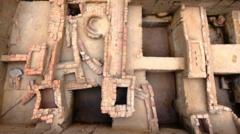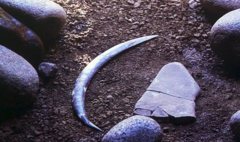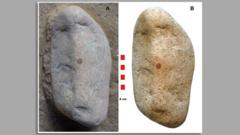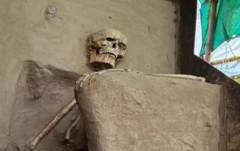Rakhaldas Banerjee, an Indian archaeologist whose groundbreaking work in the early 20th century led to the discovery of the ancient civilization of Mohenjo-daro, has largely faded from collective memory, overshadowed by controversy and the credited achievements of others. This skilled explorer and epigraphist was an integral part of the British-run Archaeological Survey of India (ASI) when he made his significant discoveries in present-day Pakistan, an area that was once part of the vast Indus Valley Civilization.
The Indus Valley Civilization, known for its advanced urban planning and architecture, covered a span from north-east Afghanistan to north-west India during the Bronze Age, with Mohenjo-daro—translated as "mound of the dead men" in Sindhi—serving as its largest city. Banerjee, born in 1885 in Bengal to a wealthy family, undertook extensive fieldwork dedicated to uncovering ancient artifacts and historical texts, defending his ambitions in an era rife with colonial oversight.
While Banerjee's discovery of the site was pivotal, many of his contributions were allegeed to have been suppressed. Historians and archaeologists, including PK Mishra, argue that ASI chief John Marshall marginalized Banerjee's findings, instead attributing the credit for the revelation of Mohenjo-daro to himself. This contention raises questions on the preservation of history and the recognition of the individuals behind monumental discoveries.
Multiple controversies marred Banerjee’s career, notwithstanding his unique talents as an archaeologist. Described by historian Nayanjot Lahiri as lacking in diplomacy, Banerjee’s independent conduct frequently ruffled the feathers of the colonial establishment. He often undertook significant decisions without securing appropriate permissions, entangling himself in incidents that eventually hampered his reputation and career.
By 1924, the lack of funding halted Banerjee's ambitious excavation projects, and he distanced himself from Mohenjo-daro after being transferred to eastern India. Following his resignation from the ASI in 1927, he encountered financial difficulties stemming from a lavish lifestyle that conflicted with his academic earnings. Further complicating his legacy was an incident involving the alleged theft of a religious idol, which—despite being dismissed—tainted his exit from the ASI.
Banerjee continued his work as a professor after leaving the ASI but passed away at the young age of 45 in 1930, leaving behind a complex legacy marked by groundbreaking archaeological work overshadowed by personal controversies. Today, while he remains a significant figure within certain academic circles, much of the broader recognition he deserves remains elusive, placing him as a "footnote" in the history of archaeology.





















